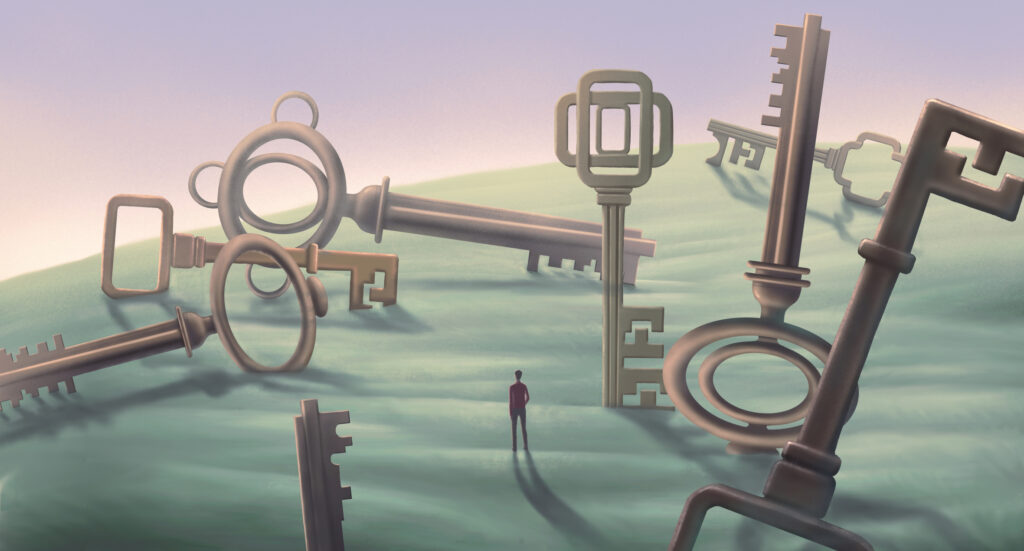In PowerPoint slides across the world, we see culture defined as ‘the way we do things around here’.
Clearly, what we do, how we do it and where we do it matter: any value or havoc created by a business, charity or government emerges from such concrete actions.
It is also a truism that change matters: climate worries, calls for employee wellbeing and belonging, economic slowdown, swings in customer appetite or society’s values and technology advances all demand that we do things in new ways.
We thus arrive at ‘culture change’, which typically reveals itself as a project for managers and teams to ‘do’. Sadly, such initiatives often fail to achieve the desired results.
A fresh approach is required, one animated by a more nuanced understanding of culture and change.
HR is well-placed to recast the narrative and help organisations create better outcomes for employees, customers and beneficiaries and the planet.
An engineering problem?
When we manipulate ‘the way we do things around here’, we typically, often unconsciously, adopt the principles of scientific management.
Team members can thank mechanical engineer Frederick Winslow Taylor for managers’ enthusiasm to see their work as a technical problem that (usually only) the boss can solve.
The 1911 monograph The Principles of Scientific Management sets out Taylor’s ideas. He believed in enforcing standardisation of methods, adoption of suitable tools and working conditions and cooperation. He also believed that the duty to do all this enforcing rested with ‘management’ alone.
Whilst his principles have been applied with unflagging energy for over a century, they are no longer fit for purpose.
Modern performance is not a complicated problem that a senior expert can solve with a stopwatch and a slide rule. Nor does it proceed, in the office or on the factory floor, independently of the human beings who carry out the task.
Culture understood as the tacit assumptions of how people might thrive reveals how the usual methods – steering committees, Gantt charts, milestones, red-amber-green reporting, and even communications campaigns – easily miss the point
Culture as unspoken assumptions
Taylor’s simplistic management thinking, rooted in ideas of time and motion, may not capture the richness of modern work. However, his ideas are quite useless when it comes to culture and change.
To see why we cannot measure, analyse predict, or prescribe culture in a way that lends itself to common methods of change, let’s turn to business psychologist Edgar Schein.
He described organisational culture as: “The pattern of basic assumptions that a given group has invented, discovered, or developed in learning to cope with its problems of external adaptation and internal integration, and that has worked well enough to be considered valid, and, therefore, to be taught to new members as the correct way to perceive, think, and feel in relation to those problems”.
In everyday terms, this definition argues that culture:
- Exists in what people know, think and feel
- Influences a person in subconscious ways
- Is amply justified by concrete experiences
- Is tacitly endorsed by respected peers
- Is expected to bring success
- And so is promoted as the favoured way to act
Culture understood as the tacit assumptions of how people might thrive reveals how the usual methods – steering committees, Gantt charts, milestones, red-amber-green reporting, and even communications campaigns – easily miss the point.
Resistance is understandable
Culture as an asset to individuals and groups also illuminates the intractable nature of change.
People are resistant when they worry they will lose out or when they are forced to question their beliefs. They struggle when the process or outcomes fly from their control.
‘Culture change’ often means rushing employees to abandon methods they have trusted for many years. They become anxious when told their views no longer ‘fit’ or when pushed into a future where their capacity, value or status is uncertain.
Projects aimed at ’culture change’ cause anxiety for many, whether they voice it or not.
Organisations often exceed project budget and timelines and yet fail to have the desired effect on practice.
We are unable … to ‘change culture’. We can, however, create the conditions for individuals – as group members – to question their assumptions and see how fresh thinking will serve them better
A fresh approach to change
Taylor saw performance-related issues that he believed could be solved as if they were complicated engineering problems: an expert who knows best can deliver the right outcome via clear methods and rigid management.
One may question whether Taylor’s emphasis on task ever fully applied to work improvements. What is certain, however, is that we today need to tackle change in a way that accounts for ambiguous outcomes, complex unknowns, shifting environments, and, most notably, human beings.
The thinking of scientific management quietly dominates many modern workplaces.
However, with a more accurate sense of culture, we can see that such efforts will fail sooner or later: managers cannot predict the future and they cannot force people to change their minds.
We are unable, then, to ‘change culture’. We can, however, create the conditions for individuals – as group members – to question their assumptions and see how fresh thinking will serve them better.
Culture evolution: What can HR do?
We need to champion the idea that culture and change are, fundamentally, questions of people, both as individuals and within groups. HR can encourage managers to shape the environment and allow culture to evolve.
Four priorities to help guide practice are:
1. Introduce new and meaningful conditions
We cannot from the outside force people’s assumptions, but we can introduce environmental conditions that invite them to question their own beliefs.
Go beyond rhetoric (this is important) to demonstrate how old ways fail, to prove new forms of value and to reward new behaviours.
2. Show respect for everyone’s fears
Assumptions help each of us navigate the world without reinventing the wheel.
We are scared to learn that our methods are no longer welcome. Listen, understand and show empathy.
The group is stronger than the CEO or any senior manager, and yet culture evolution emerges from within each individual
3. Honour individual and group needs
The group is stronger than the CEO or any senior manager, and yet culture evolution emerges from within each individual.
Set fresh conditions for new forms of success at both group and individual levels.
4. Acknowledge the old ways
Culture, in the sense of assumptions, only exists because it brought success in the past: whilst the environment may have evolved, people need time to catch up.
Blame is the shortest route to resistance and frustration.
We cannot change culture, but we can encourage people’s assumptions to evolve. When HR teams enable managers to champion these four priorities, they are equipping their organisations to move beyond logjams and create lasting value.
If you enjoyed this, read: Three ways ethical leadership can promote culture change
[cm_form form_id=’cm_65a14c3f5da64′]






